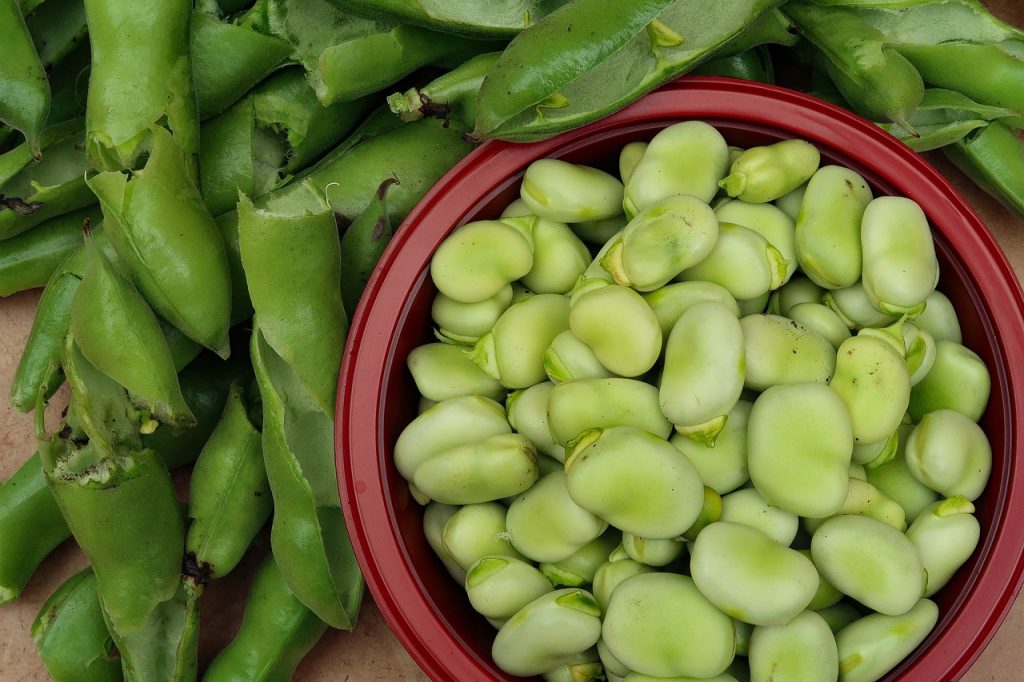Fresh green beans, broad beans, peas, chickpeas… how about having these vegetables in your garden? They don’t require special care, but there are a few things you should keep in mind, also in the case of particular species.
They are a source of natural protein, they also contain fibre, unsaturated fatty acids and minerals (e.g. calcium, phosphorus, magnesium, iodine, iron, potassium), as well as vitamins, especially those from the B group. All this makes them a must in our diet, and their regular consumption protects against atherosclerosis and heart disease. Leguminous vegetables include mainly broad beans, beans, peas, chickpeas, lentils and soya beans.
Their taste qualities make them popular in cooking and in many diets. Peas and beans are used in vegan cuisine. They can be found in stews, soups, pastes or salads. It is no longer surprising that they are used in desserts like brownie or muffins. The edible part can be pods (green beans), immature seeds (broad beans) or mature seeds (peas).
Legumes like the sun. This is their greatest requirement. They behave differently towards water. The substrate should be constantly watered, but in moderation. However, if, for example, string beans show fibrousness of the seed shells, it means that for a certain period it has just run out of water.
What about the soil? First of all, it should be fertile. In addition, legumes manifest a special property, which probably many of us have heard about at school. Thanks to their symbiosis with papillary bacteria, which bind atmospheric nitrogen from the soil air, these plants are not fertilized with nitrogen. Therefore, fertilization is only used when there is a clear deficiency of other elements in the soil. They can also be cultivated in later years after manuring.
Recommended varieties are shelling peas and sugar snap peas. Shelling peas are the most common variety of legume. It is characterized by hard pods with large green seeds inside, which are the only edible part of this plant. Sugar snap peas have soft pods with small seeds and can be eaten whole.
An annual climbing plant, it has many varieties with varying growth (up to 250 cm). It requires a lot of light and heat, moreover its position should be sheltered from the wind (due to the height). Recommended varieties are: black bean, pinto and flageolet.
This characteristic yellowish seeds, which, in addition to the standard protein of legumes, contain complex carbohydrates, vitamins A, C, E and those of group B, in addition to many microelements, including iron, manganese, zinc, phosphorus, calcium, magnesium and potassium. Chickpeas are a source of plant sterols and dietary fiber, so they have a beneficial effect on the digestive system (including prevents constipation). The ingredients contained in it also have a beneficial effect on blood pressure. It is often found in hummus. The most commonly used varieties are kabuli and desi.
It is a species very simple in cultivation, does not require special conditions for cultivation. The edible part of this plant is the large seeds, which are contained in large pods. The recommended variety of broad beans is Karmazyn or Bizon.

Vegetables from your own garden will taste great, especially that obtained with your own labor, as healthy and chemical-free as possible. Growing them is very easy, these vegetables don’t require special soil, sophisticated requirements and care, which makes it all the more tempting to grow them.